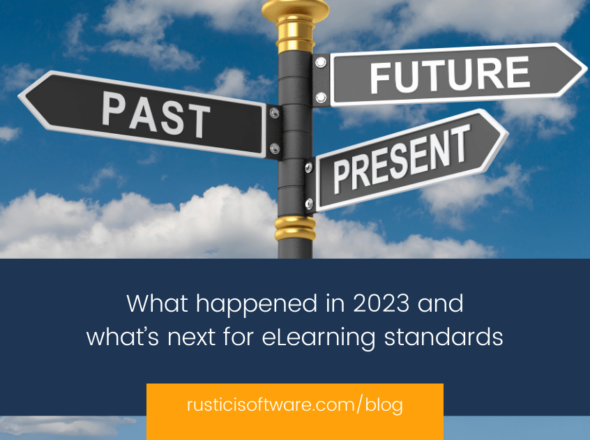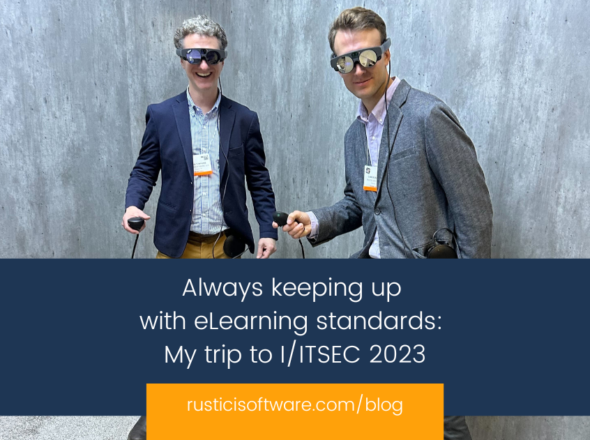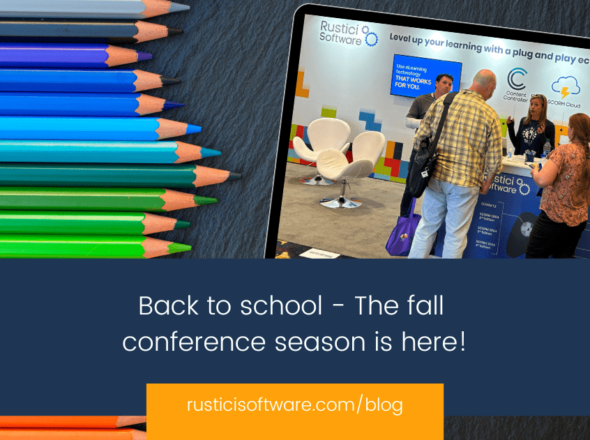The parallels between television and elearning are abundant. I mean, who doesn’t love sitting down on a Friday night to watch the best elearning they couldn’t get to all week?
Really, though, there are plenty of legitimate parallels, and one of the things I like is watching elearning evolve in similar ways to television/movies, albeit a few years behind.
One fashion in which that evolution has occurred is the actual delivery mechanisms.
| 1. Video Industry | 1. Elearning Industry |

“Let’s go to the movies!” People gathered together in a movie theater to see the film of the day. It was a compelling shared experience, and allowed each participant to see something they hadn’t before. For the studio, this provided scale that far exceeded that of a stage play. For many attendees, though, this meant that seeing the movie was incredibly expensive or completely impossible. And one crying baby could ruin the experience for everyone. |

In Person Training Like the movies, people gathered in a single location to learn together. Unfortunately, this meant that everyone had to be gathered together in the same place, at the same time, and probably at great expense to the company providing the training. Rather than teaching each person individually, the subject matter expert could teach several people at once. For many learners, though, this meant that the training was either inaccessible or hugely inconvenient. And one cry baby could ruin the experience for everyone. |
| 2. Video Industry | 2. Elearning Industry |

“Blockbuster” “I want to watch Goonies tonight. At 7:45pm. And eat pizza. On a couch.” It required a trip to something called a “video store”, wherein you hoped to find the specific movie in stock that you wanted to watch. And that was a real risk. The beauty of it, though, is that if they had your movie, you were in control. Start time? That’s up to you. Location? Your choice as well. And the world was your oyster as far as what you were eating and drinking and sitting on. Several beloved standards helped this work. VHS, Betamax, Laserdisc, DVD… these standards allowed us to buy machines for home that knew how to play whatever movie we brought home. |

SCORM Package Delivery Yes, learners could now watch content in an LMS when and where they wanted. This was a big leap. Barriers of travel and cost were substantially reduced. But getting a specific piece of content into your system wasn’t really possible until SCORM allowed for it in the early 2000s. With the advent of SCORM, learners were now able to consume widely varied content from their desk at work or at home. And subject matter expertise was available at a scale that was inconceivable in the instructor led training world. |
| 3. Video Industry | 3. Elearning Industry |

iTunes One online store with all the movies and tv shows and all I have to do is click a button!? When streaming became a reality, we no longer had to leave the house to acquire the content, and we didn’t have to worry about whether someone else had claimed that movie first. There were just so. many. options. And finding a movie to watch became less of a problem. Instead, finding the right movie to watch was a challenge. How do you curate an massive pile of movies?! |

Content Consolidator Companies like Skillsoft and Mindleaders before, and Open Sesame today, have collected massive libraries of content from which companies and learners can choose. Finding a relevant piece of content gets easier all the time, and it can be procured at a known price in a matter of minutes. Compatibility has become less of a concern (although Skillsoft’s OLSA standard isn’t exactly that). Learners and companies alike have access to great quantities of quality content, and subject matter experts have a easy and convenient way to get it to them. |
| 4. Video Industry | 4. Elearning Industry |

Netflix Today’s Netflix is fundamentally different from prior delivery models in several ways:Netflix’s “all you can consume” model allows a customer to pay one price per month and watch lots of varied content at their leisure. Viewers can try a show with no risk, move amongst them freely, and watch as much as they want. Shows can be released in their entirety on a given day, rather than strung out over months. Advertisement is no longer a part of the equation.Netflix also provides their own content. They are creators as well as distributors. Shows like House of Cards, Bloodlines, and The Unbreakable Kimmy Schmidt show a care and crafting that isn’t necessarily present in commodities acquired from other providers. Netflix has a clear incentive to create groundbreaking content. If they build remarkable content, then their customers will stay and new ones will join in.Netflix has every reason to make their user experience better. If their app is easier to use than NBC’s, then Netflix benefits, and they get more viewers, customers, and money. |

Content Controller Invested content providers who can centralize their content have distinct opportunities from other providers.They can correct, analyze, and assess their content in a way that others can’t. By centralizing the content, they can see how it’s being used across clients. They can assess questions and their efficacy, they can discover and correct mistakes, and they can evolve content directly.Providers can manage versions and deployments much more effectively.Providers can explore possibilities like offering a subject matter expert to multiple clients via online chat or something similar.More than anything, though, it puts the content provider in a closer relationship with the learner and the customer. Rather than throwing a piece of content to the wind and hoping, the content provider has visibility and a manner in which they can affect the relationship. |
Content Controller is the next-generation method of delivering content. It’s the elearning equivalent of what Netflix is to the video industry, and we’d love to talk to you about it. Learn more at the Content Controller web page, and get in touch with us if you have questions.


